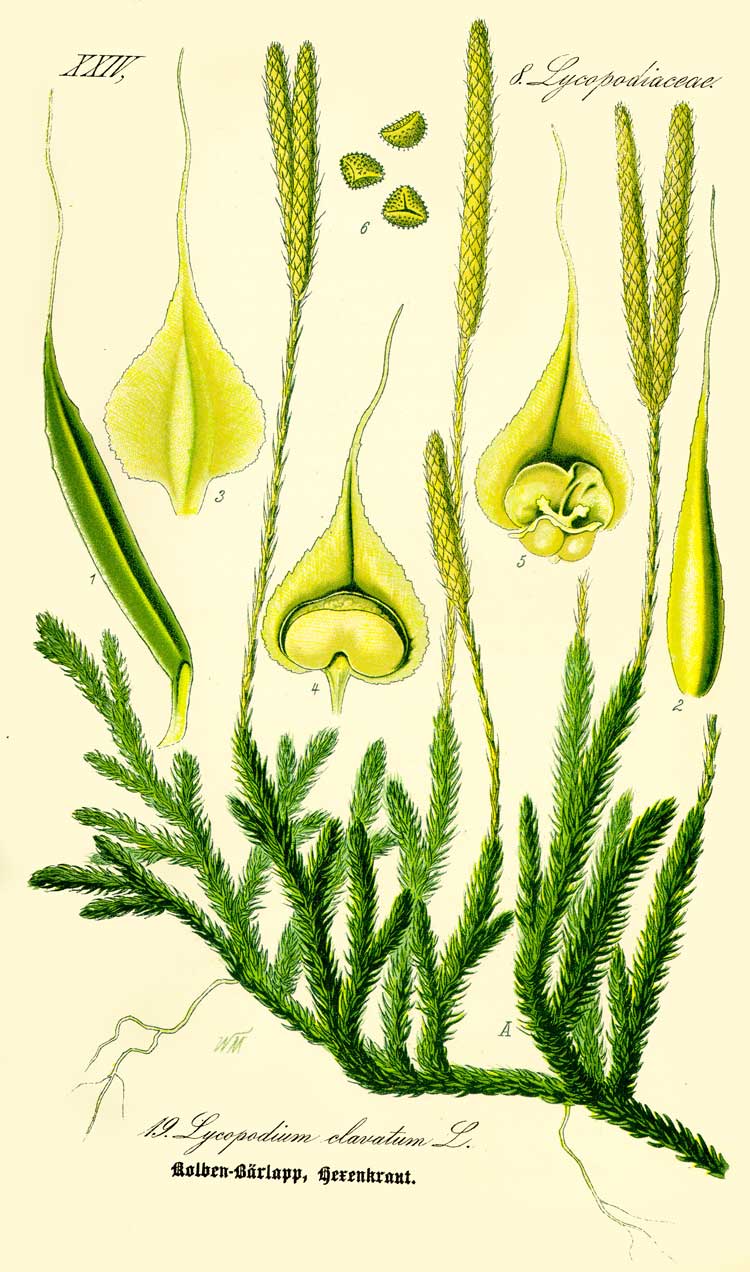Lycopodium clavatum Cladus: Eukaryota
Lycopodium clavatum , Photo: U.S. Fish and Wildlife Service Name Lycopodium clavatum, L. Vernacular names References * Species Plantarum 2 1753 ---------- Lycopodium clavatum (wolf's-foot clubmoss, stag's-horn clubmoss or groundpine[1]) is the most widespread species in the genus Lycopodium of the clubmoss family Lycopodiaceae. It is a spore-bearing vascular plant, growing mainly prostrate along the ground with stems up to 1 m long; the stems are much branched, and densely clothed with small spirally-arranged leaves. The leaves are 3-5 mm long and 0.7-1 mm broad, tapered to a fine hair-like white point. The branches bearing spore cones turn erect, reaching 5-15 cm above ground, and have fewer leaves than the horizontal branches. The spore cones are yellow-green, 2-3 cm long and 5 mm broad. The horizontal stems produce roots at frequent intervals along their length, allowing the stem to grow indefinitely along the ground. The stems superficially resemble small seedlings of coniferous trees, though it is not related to these. It has a subcosmopolitan distribution, with distinct subspecies and varieties in different parts of its range: * Lycopodium clavatum subsp. clavatum Although globally widespread, like many clubmosses, it is confined to undisturbed sites, disappearing from farmed areas and sites with regular burning. As a result, it is endangered in many areas. In the UK it is one of 101 species named as a high priority for conservation by the wild plant charity Plantlife.[2] Other common names Common clubmoss, Stagshorn clubmoss, Wolfpaw clubmoss, Foxtail clubmoss, Running clubmoss, Running ground-pine, Running pine[1], Running moss, Princess Pine, and others. Use The spores of this moss, "Lycopodium powder", are explosive if present in the air in high enough densities. They were used as flash powder in early photography. References 1. ^ a b Bailey, L.H.; Bailey, E.Z.; the staff of the Liberty Hyde Bailey Hortorium. 1976. Hortus third: A concise dictionary of plants cultivated in the United States and Canada. Macmillan, New York. Source: Wikispecies, Wikipedia: All text is available under the terms of the GNU Free Documentation License |
|


